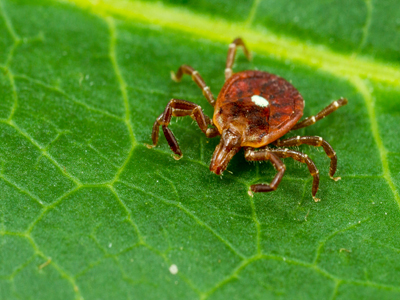Call for your appointment today 914-666-4665 | Mt. Kisco, New York

Welcome to another Inside Lyme Podcast with your host Dr. Daniel Cameron. In this episode, Dr. Cameron will be discussing the case of a 63-year-old woman who was diagnosed with Southern Tick-Associated Rash Illness (STARI).
In their article “Southern Tick-Associated Rash Illness: Florida’s Lyme Disease” Abdelmaseih and colleagues describe the woman’s case, highlighting the differences between STARI and Lyme disease.¹
WATCH PODCAST BELOW
CLICK BELOW TO LISTEN TO PODCAST
The patient was bitten by a lone-star tick on her right leg while camping in Gainesville, Florida. She noticed a pruritic target erythematous lesion after removing the tick.
Two weeks later she was evaluated and reported having a persistent fever, headache, and diffuse myalgias for 4 days following the tick bite. On presentation, she had a fever of 100.5 F and a tachycardia of 127 BPM, low white count, anemia, low platelet count and elevated liver function tests.
Fortunately, the patient’s symptoms resolved with a 14-day course of doxycycline.
The authors discuss the differences and similarities of STARI and Lyme disease:
- “The associated rash is similar if not indistinguishable from Lyme disease erythema migrans, with lymphocytic dermal infiltrate.”
- Both the diagnosis of STARI and Lyme disease are based on clinical evidence. “At the present time, there is no approved diagnostic modality to identify STARI; thus, the diagnosis must be made on clinical evidence including erythema migrans and tick exposure.”
- The diagnosis of STARI and Lyme disease often rely on geography. “Diagnosis usually relies on geographic association (STARI from central Texas and Oklahoma eastward across the southern states and along the Atlantic coast as far north as Maine, versus Lyme disease in northeast, mid-Atlantic, and upper mid-west).”
However, the authors did not address reports documenting the presence of lone-star ticks in the Northeast, mid-Atlantic, and upper Midwest and of deer ticks in the South.
It has been assumed that STARI does not have any long-term sequelae.
“A recent study has suggested that STARI is transmitted by the lone-star tick Amblyoma americanum; however, it may take some time before all the necessary data can be collected, since much is still unknown about STARI.”
The treatment of STARI is also uncertain. “STARI is often treated as Lyme disease with doxycycline twice daily for 14 days; however, there is no approved treatment yet.”
The authors conclude, “STARI is an emerging Lyme-like illness that causes the characteristic rash, erythema migrans. The current incidence of STARI remains unknown as it is not nationally reportable.”
The following questions are addressed in this Podcast episode:
- What is STARI?
- Are there differences between STARI and Lyme disease rashes?
- Are there differences in the ticks?
- How is STARI diagnosed, compared to Lyme disease?
- What clinical evidence does one need to diagnose STARI?
- What are the consequences if Lyme disease or co-infections is overlooked?
- What do we know about ticks in the South?
Thanks for listening to another Inside Lyme Podcast. Please remember that the advice given is general and not intended as specific advice to any particular patient. If you require specific advice, please seek that advice from an experienced professional.
Inside Lyme Podcast Series
This Inside Lyme case series will be discussed on my Facebook page and made available on podcast and YouTube. As always, it is your likes, comments, and shares that help spread the word about this series and our work. If you can, please leave a review on iTunes or wherever else you get your podcasts.
References:
- Abdelmaseih R, Ashraf B, Abdelmasih R, Dunn S, Nasser H. Southern Tick-Associated Rash Illness: Florida’s Lyme Disease Variant. Cureus. May 28 2021;13(5):e15306. doi:10.7759/cureus.15306




Emerging? I had multiple tick bites as a child during summer trips to Kentucky, in the early to mid 1970s.
I has taken a while for doctors and researchers to document ticks and tick borne diseases in new areas. Until someone writes it up, the typical answer might be we don’t have tick or we don’t have tick borne diseases in this area.
I have been ill since the spring of 1987 . I lived in a wooded area near a lake . I saw several Possums and Raccoons when I lived there . I had not lived there long and I was clearing brush and taking it into the woods . When I finished and was cleaning up . I found a Tick embedded in my left arm . I removed it with tweezers and flushed it .It wasn’t long before subtle changes began .Visual problems ,fatique and and a strange sensation in my left foot and left arm . Several months later I was diagnosed with Hemianopsia . I started having memory problems .Nobody seemed to know what was wrong . It wasn’t until 1999 and my mother was watching a show about Lyme Disease and she called me to tell me how the rash shown on the show looked the same as the one I developed after the Tick bite .I contacted a Infectious disease Doctor and he did treat me with iv antibiotics . I did get better after being bed ridden and having to use a walker while undergoing